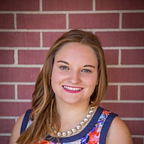The Disneyland Paris That Could Have Been: Speakeasies, Gangsters, and a 1920s Jazz Club
What happened when one man had to redesign Walt’s legacy, Main Street U.S.A.
Between the time that Michael Eisner signed a letter of intent with the Prime Minister of France in 1985 and the opening of what was then called Euro Disneyland, in 1992, there was an explosive period of creativity among the Walt Disney Imagineering team.
This “Blue Sky” period saw designs featuring everything from an entire land contained in a large Space Mountain-style building called Discovery Mountain to a futuristic steampunk castle design.
Why the sudden creativity for a park that was simply intended to build on the tradition established by the original Disneyland in 1955, supersized at the Magic Kingdom Park in 1971, and then polished at Tokyo Disneyland in 1983?
This time, the Imagineers were encouraged to think beyond the reused renderings and cloned attractions that…
